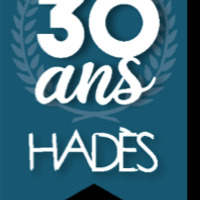
Zsolt Mészáros
Literary and art historian, lives and works in Budapest (HU)
less
Related Authors
Citlalli Domínguez
UNAM Universidad Nacional Autónoma de México
Stéphane Zygart
Université de Lille
Marlène Van de Casteele
ESMOD Paris
Maud Pérez-Simon
Université Paris 3 Sorbonne Nouvelle
HADES Archéologie
Hadès - Bureau d'investigations archéologiques
Sara Vergari
Aix-Marseille Université
Blandine Joret
University of Amsterdam
Bruno Dumézil
Sorbonne Université
Daniel Foliard
Université de Paris
Ségolène Darly
Universite Paris-8, France
InterestsView All (17)









Uploads
Papers by Zsolt Mészáros
Considering the conclusions of interdisciplinary approaches, that has taken account of the printed press’ cultural, social, political and marketing correlations, I would like to point out the mediator function of Hungarian fashion magazines from the end of the 19th century in the women’s movements, as well as its contribution to the emancipation and organization of women. I analyse in detail the Hungarian Bazaar that was edited by the Wohl-Sisters between 1873 and 1901, integrating with additional examples.
With an international, thematic approach, the book discusses the reconfiguration of the fashion industry, wartime style and production, and the reframing of selfhood, gender roles, and national identity through clothing and print culture. Fashion, Society and the First World War provides an extensive overview by leading fashion historians on an industry in the midst of major transformation.
https://resolver.pim.hu/bib/PIM2357249
https://resolver.pim.hu/bib/PIM2390126
communication and mutual support in the first wave feminist movement in
Hungary. The Association of Feminists (Feministák Egyesülete; FE) was
established by Rosika Schwimmer and Vilma Glücklich in Budapest in 1904
as the Hungarian affiliate member organization of the IWSA. The FE and the
feminist movement have become a new focus of scholarly interest recently.
Yet, the studies have described this movement and the FE as an urban, mostly
(upper) middle class initiative. Our study points out that the membership of
the FE came from different classes, including upper and lower middle class
working women and women from rural areas, including peasants, which
created a strong and wide network of solidarity. They had supporters among
aristocrats and men as well. The Budapest office of the FE coordinated and
connected the work of their local branch organisations in 42 towns and
villages all over Hungary. The recent study by the authors is based on the
reserach of primary archive sources of the FE. The correspondence of the FE
with the Balmazújváros peasant women’s organization highlights the narrative
and the actions of solidarity. The activists’ solidarity was an essential and key
element in the functioning of the organization. Mutual support and
encouragement served as the basis of the common identity of the members
of the movement and served as the basis for formulating the common value
system and orientation and their collective action.
// A múlt századelő hazai feminizmusának dokumentumait kutatva, kibontakoznak előttünk a női szolidaritás változatos példái. Az aktivisták levéltárban megőrzött leveleit elemezve,-jelen esetben a Balmazújvárosi Szabad Nőszervezet és a Feministák Egyesülete közötti kapcsolat, a vidéki és a fővárosi feministák kapcsolatának esettanulmányán keresztül-felfejthetők a választójogi mozgalmon belül a megerősítés érzelmi motívumai, az egymás támogatása és bíztatása mellett a tényleges segítségnyújtás konkrét mozzanatai is. Ezek feltárása új eredményekkel járul hozzá a hazai feminista törekvések történetéhez, hiszen közvetlen közelről mutat rá a mozgalom tagjaiból szőtt hálózat működésére, a mozgalmat összetartó erőkre, arra a szoros kohézióra, ami elsősorban a szolidaritáshoz kötődő közös identitáson, és az ebből fakadó közös értékrenden alapult.
Considering the conclusions of interdisciplinary approaches, that has taken account of the printed press’ cultural, social, political and marketing correlations, I would like to point out the mediator function of Hungarian fashion magazines from the end of the 19th century in the women’s movements, as well as its contribution to the emancipation and organization of women. I analyse in detail the Hungarian Bazaar that was edited by the Wohl-Sisters between 1873 and 1901, integrating with additional examples.
With an international, thematic approach, the book discusses the reconfiguration of the fashion industry, wartime style and production, and the reframing of selfhood, gender roles, and national identity through clothing and print culture. Fashion, Society and the First World War provides an extensive overview by leading fashion historians on an industry in the midst of major transformation.
https://resolver.pim.hu/bib/PIM2357249
https://resolver.pim.hu/bib/PIM2390126
communication and mutual support in the first wave feminist movement in
Hungary. The Association of Feminists (Feministák Egyesülete; FE) was
established by Rosika Schwimmer and Vilma Glücklich in Budapest in 1904
as the Hungarian affiliate member organization of the IWSA. The FE and the
feminist movement have become a new focus of scholarly interest recently.
Yet, the studies have described this movement and the FE as an urban, mostly
(upper) middle class initiative. Our study points out that the membership of
the FE came from different classes, including upper and lower middle class
working women and women from rural areas, including peasants, which
created a strong and wide network of solidarity. They had supporters among
aristocrats and men as well. The Budapest office of the FE coordinated and
connected the work of their local branch organisations in 42 towns and
villages all over Hungary. The recent study by the authors is based on the
reserach of primary archive sources of the FE. The correspondence of the FE
with the Balmazújváros peasant women’s organization highlights the narrative
and the actions of solidarity. The activists’ solidarity was an essential and key
element in the functioning of the organization. Mutual support and
encouragement served as the basis of the common identity of the members
of the movement and served as the basis for formulating the common value
system and orientation and their collective action.
// A múlt századelő hazai feminizmusának dokumentumait kutatva, kibontakoznak előttünk a női szolidaritás változatos példái. Az aktivisták levéltárban megőrzött leveleit elemezve,-jelen esetben a Balmazújvárosi Szabad Nőszervezet és a Feministák Egyesülete közötti kapcsolat, a vidéki és a fővárosi feministák kapcsolatának esettanulmányán keresztül-felfejthetők a választójogi mozgalmon belül a megerősítés érzelmi motívumai, az egymás támogatása és bíztatása mellett a tényleges segítségnyújtás konkrét mozzanatai is. Ezek feltárása új eredményekkel járul hozzá a hazai feminista törekvések történetéhez, hiszen közvetlen közelről mutat rá a mozgalom tagjaiból szőtt hálózat működésére, a mozgalmat összetartó erőkre, arra a szoros kohézióra, ami elsősorban a szolidaritáshoz kötődő közös identitáson, és az ebből fakadó közös értékrenden alapult.
Többek között arra keressük a választ, hogy öltözködési szokásai milyen módon építették kultuszát, valamint a külső tudatos alakítása hogyan kapcsolódott össze írói és férfi szerepekkel. Mindemellett London, Párizs és Budapest érintésével szó esik a korabeli férfidivat alakulásáról, kulturális és társadalmi hátteréről, valamint az úri elegancia elveiről, helyszíneiről és más hőseiről.
The Scotsman, The Queen, Der Bazar) and published books at foreign publishers. Besides their works as writers, editors and journalists, the Wohl sisters hosted a literary salon in Budapest. This salon became the favourite meeting place of contemporary intellectuals, artists and politicians also from abroad.
In my paper I present the Wohl sisters’ rich oeuvre (as writers, editors and translators) by interpreting their salon as the place of cultural and intellectual exchanges, and the site of creativity and networking. I will examine how social life and editorial work were connected during the process of the production of the issues of the journal. I will demonstrate the interrelations of the Wohl sisters’ salon and the Hungarian Bazaar by placing these into the transnational and cross-cultural context.
megközelítésekkel összhangban vizsgálom előadásomban az idáig kevés figyelemre méltatott magyar divatlapok működését, szerkesztési stratégiáit és tartalmát az 1918 és 1921 közötti periódusra vonatkozóan. Tehát nemcsak forrásokként tekintek rájuk, hanem szemügyre veszem felépítésüket, olvasóikkal való interakcióikat, szerzőgárdájukat, helyüket és szerepüket a kor kulturális/irodalmi életében, számolva az irodalmi szövegek sajtóközegével. Perspektívájukból hogyan bontakozik ki ez a fordulatokban és rezsimváltásokban gazdag időszak? A társadalmi és politikai változások milyen módokon ragadhatók meg az öltözködéshez, a nemi szerepekhez, a mindennapokhoz, a történelmi eseményekhez, valamint a szövegekhez való viszonyukban? A vizsgálat tárgyául pedig a Budapesti Bazár (1860–1928) és a Divatsalon (1888–1924) című két nagy múltú divatlapot választom.
Korábbi, elsősorban levéltári dokumentumokra (korabeli levelezésre) alapozott feminizmustörténeti kutatások kimutatták, hogy rendkívüli jelentősége volt a közös politikai értékek és célok mellett a baráti kötelékeknek a nagy nemzetközi nőszerveztek (Nemzetközi Női Választójogi Szövetség, Nők Nemzetközi Békeligája) hatékony működésében (Bosch – Kloosterman, eds. 1990). E szervezetek meghatározó egyéniségei közötti levelezések személyes jókapcsolatokról is árulkodnak, ami szintén hozzájárult a feminista mozgalmon belüli érzelmi közösség megszilárdításához, mint például Aletta Jacobs és Schwimmer Rózsa esetében. (Acsády – Mészáros 2015)
Előadásunkban az érzelmeknek a nőmozgalom szerveződésében és tevékenységében betöltött funkcióját az 1904-ben alapított Feministák Egyesületének budapesti irodája és tagszervezetei között zajló levelezésén keresztül tárjuk fel. Az érzelmek szerepének vizsgálatául esettanulmányként a balmazújvárosi Földmívelő Egylet Női Szabad Szervezete és a Feministák Egyesülete közötti több mint két évtizedes levelezést választottuk, amely jól példázza a szövegekben (mind retorikai mind tartalmi szinten) érvényesülő, az érzelmi közösséget szervező motívumokat, folyamatokat.
The paper aims to describe the ways of functioning, the motivations, the activities of the local groups, highlighting their connections with the main office of the organization in Budapest and also the direct or indirect links to the international level (for example Hungarian delegates of local rural feminist groups were present first ever at an IWSA congress in Amsterdam, 1908). At the same time the paper aims to reveal these in comparison with the way how the main office of the Feminist Network in Budapest was connected to the IWSA. How values fluctuated, how female empowerment and expressions of solidarity passed through these links and networks? What characterizes the strategies on the international, national and local levels? How were the activities harmonized? What significances personal relations had and how these personal connections influenced the movements? Beyond the comparative analysis the paper will also give so far not recognised examples of how local feminist activities were accepted by the local communities.
The event became one of the most significant suffrege meetings of the pre-war Europe. It representated an enaourmous effort to construct an international discourse in addressing contemporary social issues. The agenda showed a great variety of issues understanding women’s suffrege not as an ultimate goal but means to achieve just society. (C. Chapman Catt). The event enjoyed great public interest. The number of participants exceeded 2000. Well-known personalities of the international suffrage movement joined the work of the Congress. The event received a huge media interest. Almost identically its significance is recognized regardless of the political standpoint of the journals. The first results of a larger project to map the reactions to the issues raised by the IWSA Congress in 1913 will be presented by the paper based on the close reading of the the primary sourse of the contemporary press: jornals both in Hungary, Austria, England and France. The examination of the different media representations enables us to reconstruct the reception of the IWSA Congress.
Judit ACSÁDY and Zsolt MÉSZÁROS
In my presentation I review the feminist group's history of transylvanian town Oradea (Nagyvárad) from the establishment's year, 1907, until the outbreak's of World War I. The local group came into existence as the second branch of Budapest Association of Feminists. I examine his activity and role with the contemporary Hungarian feminist press's help (A Nő és a Társadalom/The Woman and society, A Nő/The Woman) in the local, national and transnational network of women's movement.
https://www.wehrhahn-verlag.de/public/index.php?ID_Section=2&ID_Product=1317
Visuelles Design. Die Journalseite als gestaltete Fläche dokumentiert den Forschungsertrag der ersten internationalen Konferenz der DFG-Forschergruppe 2288 »Journalliteratur«. Die hier gebotenen Beiträge widmen sich der visuellen Gestaltung von Journalen, im Sinne der Forschergruppe verstanden als das gesamte Spektrum periodisch erscheinender Printpublikationen. Das Interesse richtet sich auf die Journal(doppel)seite als sichtbare bedruckte Fläche, auf der Worte und Bilder in einem gestalteten Zusammenhang erscheinen. Als Prämisse ist gesetzt, dass die schrift- und bildförmigen Journalinhalte sich nicht abstrakt, körper- wie ortlos, realisieren, sondern an die Materialität und Druckordnung des Journals gebunden bleiben, die eine flächige wie sequentielle Anordnung diverser visueller Elemente vorsehen. Derart werden journalspezifische Momente der (Doppel-)Seitengestaltung konturiert, nicht zuletzt im Vergleich zu anderen Medienformaten, insbesondere dem Buch. Behandelt werden Aspekte anglo-amerikanischer, deutschsprachiger, französischer und arabischer Journalliteratur, überwiegend des ›langen‹ 19. Jahrhunderts.
Kötetünk második részét a CentrArt Egyesület műhelyében 2006-2009 között tartott előadások alkotják. Régészek, történészek és művészettörténészek alapkutatásainak friss eredményeit mutatja be ez a fejezet. A kötet harmadik részében az Eötvös Loránd Tudományegyetem Bölcsészettudományi Karának Művészettörténeti Intézetében 2006-ban Pál Linda és Süle Ágnes Katalin által Primus Gradus címen kezdeményezett, de meghiúsult tanszéki folyóirat első számába készült négy tanulmány kapott helyet.
Kötetünkben több tudományág, és tudományos iskola képviselőinek különböző szemléletű írásait adjuk közre. Úgy véljük, hogy a történettudomány, a művészettörténet és a régészet sajátos megközelítési módjai sokszínű képet adnak a magyar művészettörténeti kutatás aktuális kérdéseiről. A tanulmányok az európai művészet néhány, eddig figyelmen kívül hagyott vagy nem kellő mélységben ismert területét és forrását állítják a középpontba. A tárgyalt témák átfogják a középkortól a 20. századig terjedő időszakot. A tanulmányok túlnyomó többsége új alapkutatásokra épül. Jelentős részük egy-egy művet vagy forrást elemez, de van köztük nagyobb forráscsoportra kiterjedő, átfogó vizsgálat is.
Köszönjük Tóth Bálintnak, Schmidt Péternek és Michele Sitanak a tanulmányok idegen nyelvű összefoglalóinak lektorálását.
Dress Code: Art Deco, exhibition, Museum of Applied Arts - György Ráth Villa, Budapest
11 May 2024